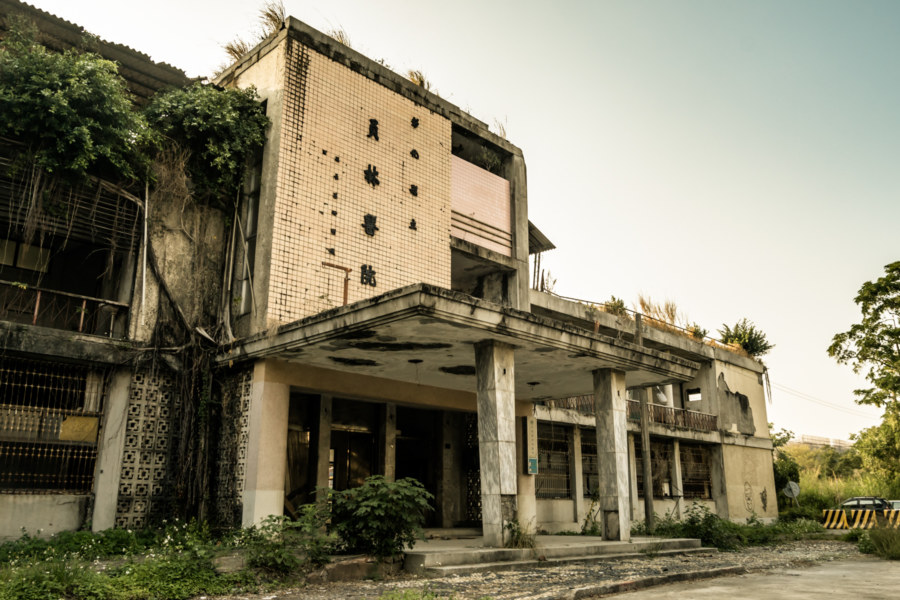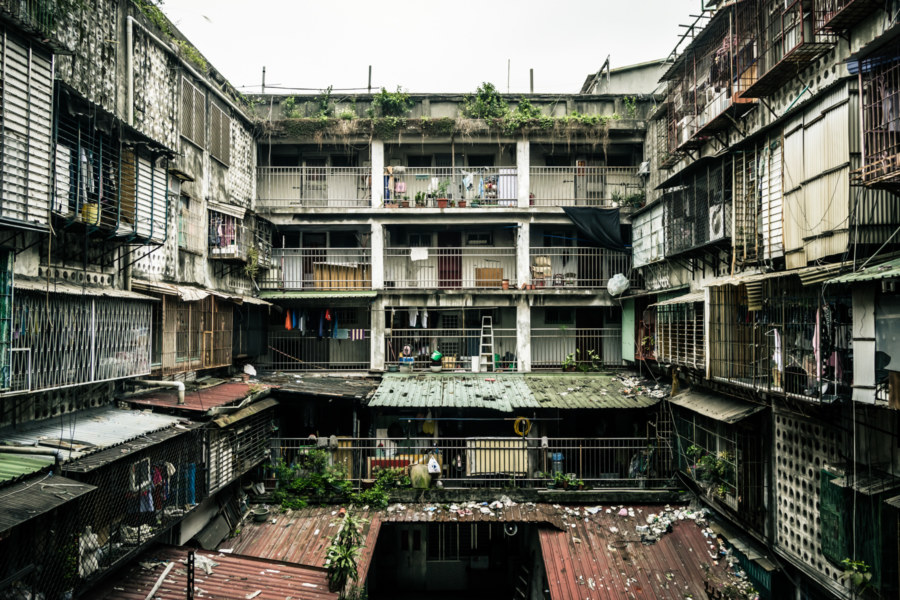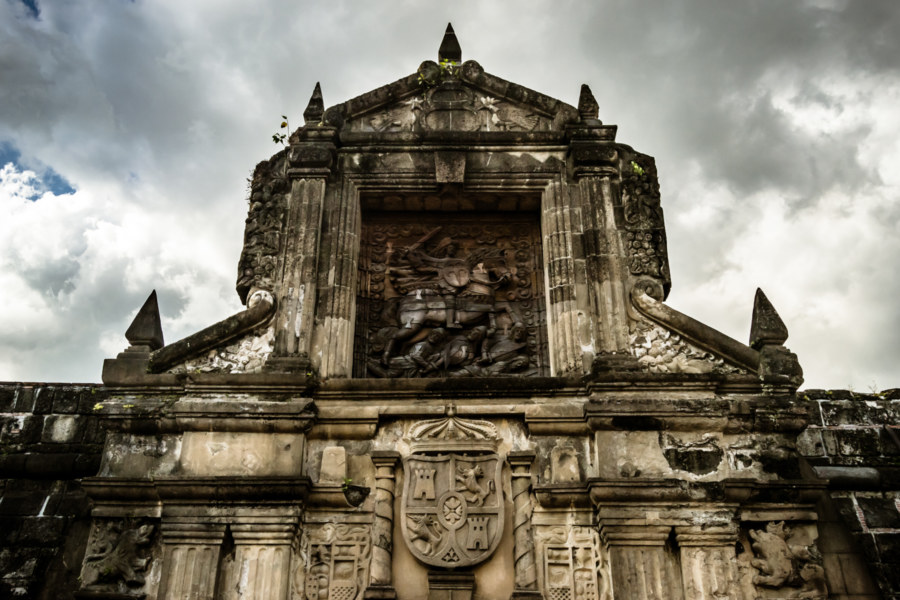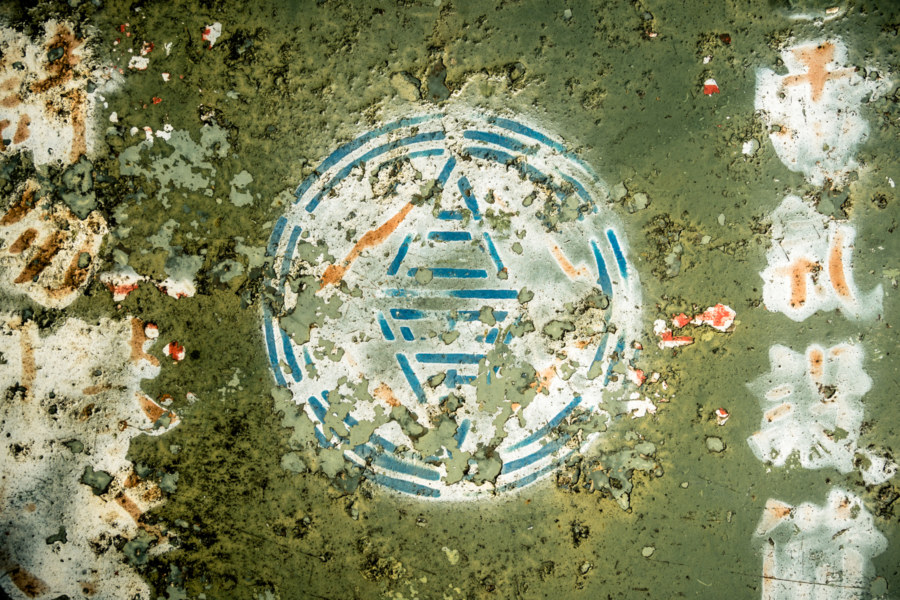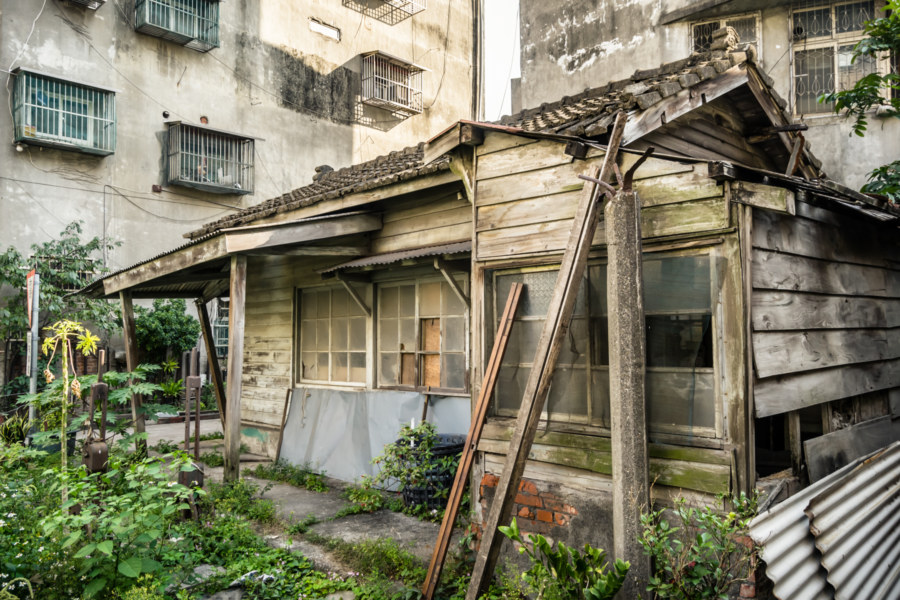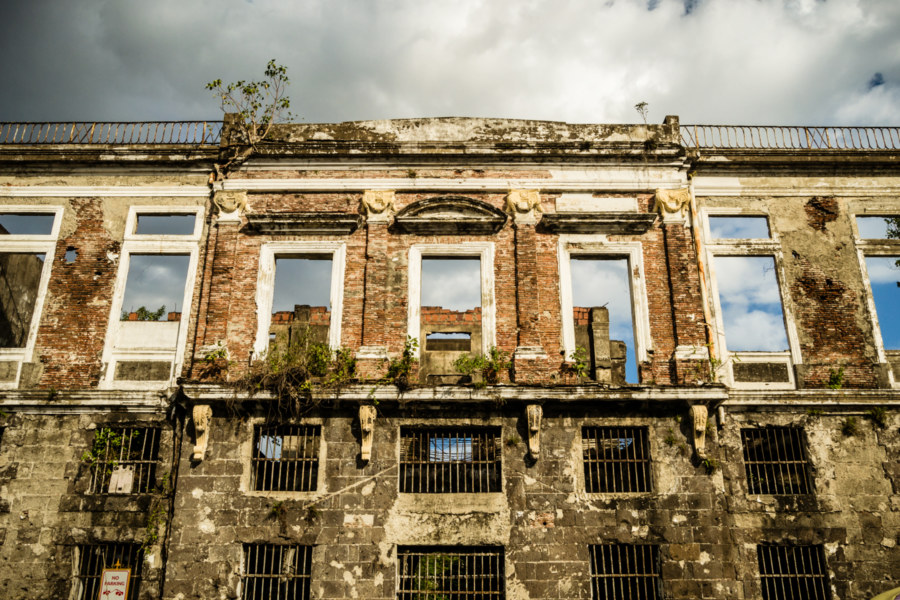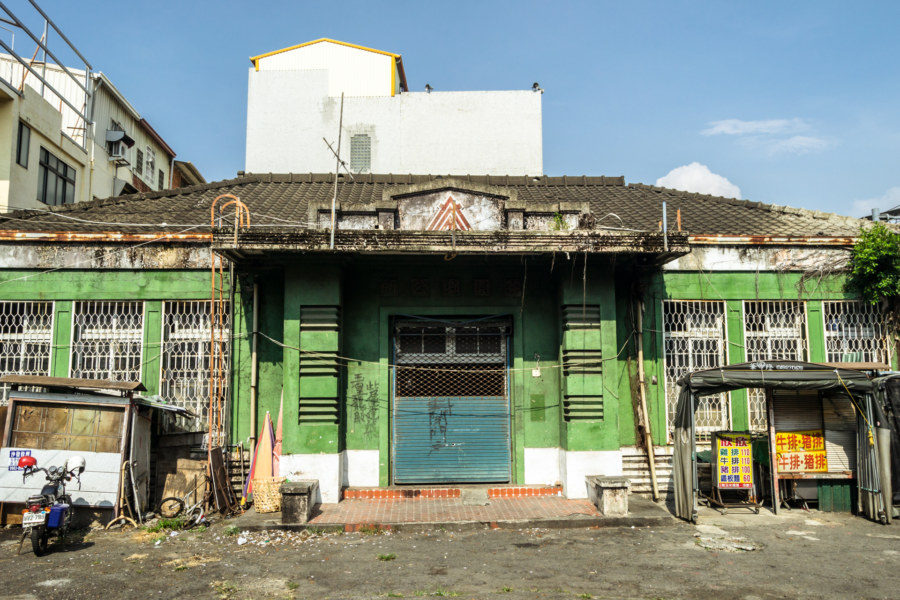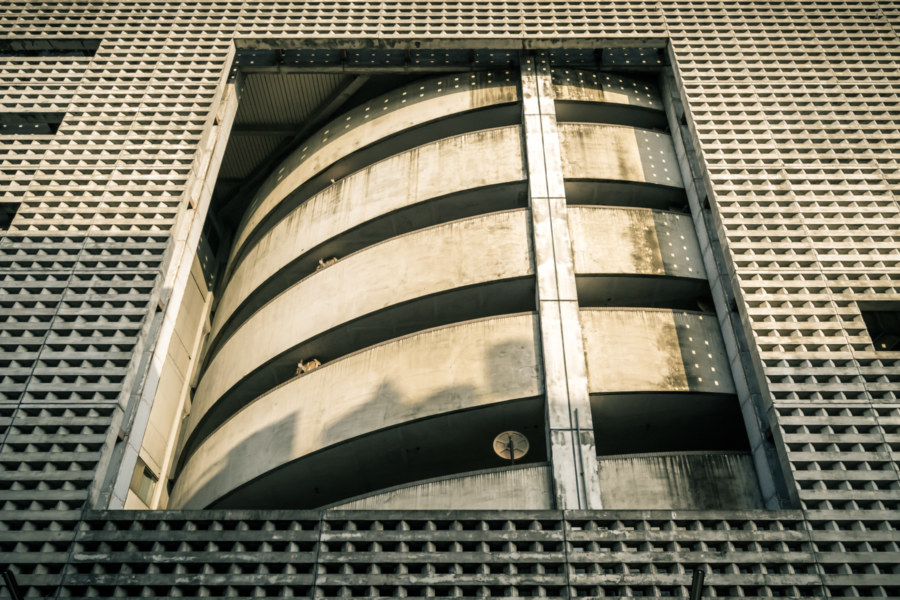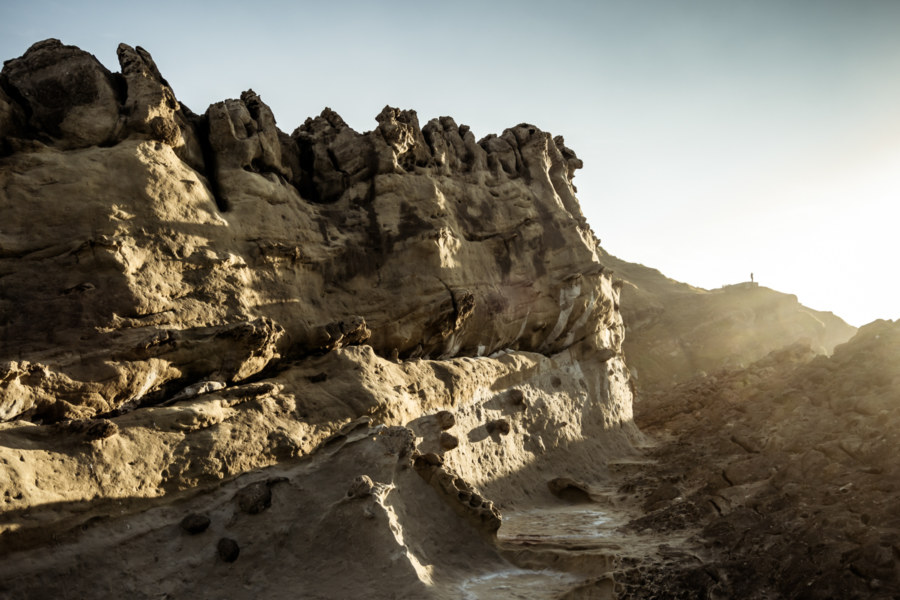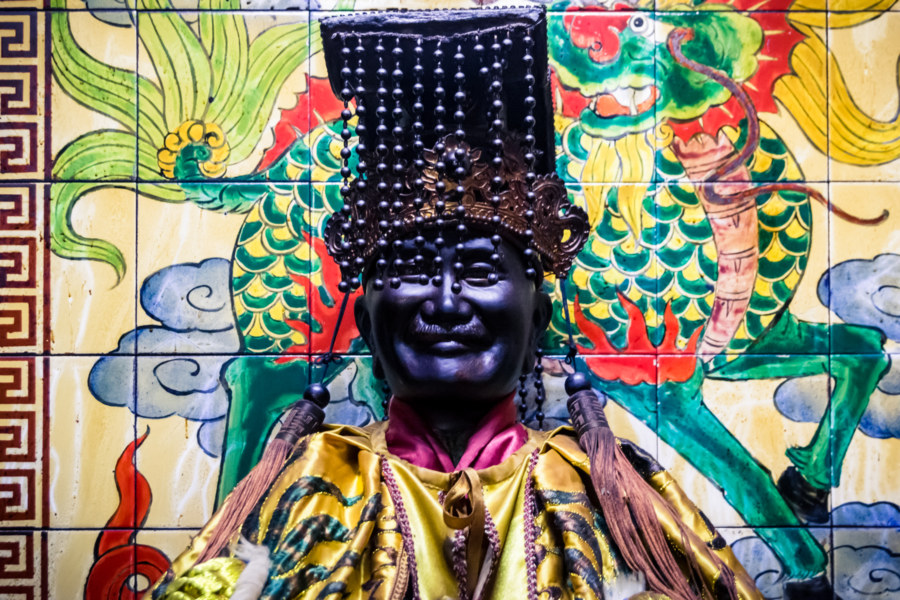Despite having spent a lot of time in Yuanlin, a mid-sized city in central Changhua, Taiwan, I have only recently begun to explore some of its more famous ruins. Among these is Yuanlin Hospital 員林醫院, formally the Changhua County Yuanlin Hospital 彰化縣立員林醫院, originally built in 1963 and operational until the the turn of the millennium. Nowadays it is one of the more notorious abandoned places in central Taiwan, where it is regularly featured in news reports, particularly around Ghost Month 鬼月. Taiwanese media engage in an annual outpouring of overly sensationalized stories about haunted places—and hospitals, as liminal spaces of birth and death, often appear in such reports, complicating research into the real story of what went on.
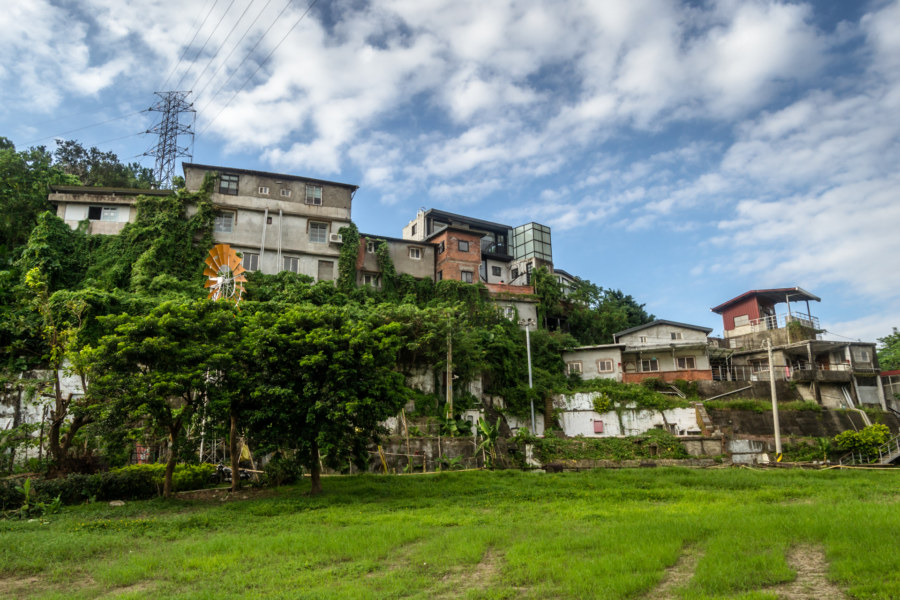
Subterms
Inside the Decaying Courtyard
The view from within a decaying public housing block in downtown Taipei.
Yesterday I followed a lead to Lánzhōu Public Housing (蘭州國宅), a KMT authoritarian era project in central Datong, Taipei. It is similar to Nanjichang Community (南機場社區), a far more well-known housing project in Wanhua, but this building was constructed almost ten years later in 1973. As with Nanjichang, its fate also remains unclear, as the city is working through complex land ownership issues to figure out how to move residents into more modern housing. I plan to have a full write-up about this place some day so I’ll leave it at that for now—just a glimpse.…
Postcards From Intramuros
Intramuros (literally “within the walls”) is the former center of Spanish colonial power and the Catholic Church in the Philippines. Located in the heart of old Manila, this fortified district has a long and complicated history stretching back more than four centuries, but little of what remains is original and untouched. Intramuros was heavily damaged during the Japanese invasion in 1941 and almost completely destroyed in the Battle of Manila in 1945. Almost everything seen in my photos was reconstructed beginning in the 1950s and continuing to the present day.
Transformed by Time
Yesterday I went on a short tour of Linkou inspired by the opening of the Taoyuan Airport MRT and the proliferation of YouBike stations to the exurbs of Taipei. After spending some time under the sun I stopped to pick up some water at one of Taiwan’s ubiquitous convenience stores and noticed a weathered padmount transformer out front, pictured here.
South Yuanlin Station 南員林站
South Yuanlin Station 南員林站 is an abandoned Japanese colonial era railway station located not far from the newly reopened Yuanlin Station 員林車站 in the heart of Yuanlin, a mid-sized city in central Changhua. It opened in 1933 as a small stop on the now-derelict Yuanlin Line 員林線 of the Taiwan Sugar Railways 臺灣糖業鐵路, which ran due west across the Changhua Plain 彰化平原 for approximately 9 kilometers to the Xihu Sugar Factory 溪湖糖廠 in Xihu. Apart from facilitating the transport of sugarcane and other cargo this old wooden station also provided passenger service until it was abolished sometime around 1976.
The Ruins of the Aduana Building
The Aduana Building, also known as the Intendencia, is located just outside the walls of Intramuros, the historic center of Spanish colonial Manila. Originally built as a customs house in the 1820s, it has undergone several cycles of destruction and renewal starting in 1863, when the building was almost completely destroyed by the same strong earthquake that leveled much of the old city. Rebuilt in the mid-1870s, it served various government functions—office of the National Archives, first home of the Philippines Senate, and again the Bureau of Customs—before it was ravaged during the initial and final bombing campaigns of World War II. After reconstruction it again served as the offices of different government agencies before it was finally abandoned following a devastating fire in 1979. Restoration plans have been floated since the 1990s but as of late 2015, when I wandered by, the Aduana Building remains in ruin.
Fenyuan Town Hall 芬園庄役場
Fenyuan Town Hall (芬園庄役場) is another example of neglected Japanese colonial era architecture in Taiwan. Built in 1935, this modest building was the administrative center of the village of Fenyuan, located on the eastern edge of Changhua back when it was part of Taichū Prefecture (臺中州). It survived the war and remained in use until 1994 when a newer town hall was built down the street. Art Deco flourishes and the rust-colored emblem over the entrance give Fenyuan’s old town hall a distinctive look. Nowadays it is derelict—but it seems likely that it will be restored and opened to the public some day.
Brutalist Parkade
Cǎoxiédūn Public Parkade 草鞋墩公有立體停車場 is an intimidating structure looming over one of the main commercial shopping streets in Caotun, Taiwan. I was there in search of an abandoned theater but was immediately impressed with the strikingly brutalist design of this multi-storey car park. It is merely a place to park so there’s little more to say, though it would seem that it was recently derelict. Probably the only other tidbit of information worth conveying is that “Caoxiedun” refers to the original name of the town. You can be sure the first settlers never imagined this monument to honest architecture standing in their newly sown fields.…
Postcards From Badouzi 八斗子明信片
Near the end of my first summer in Taiwan I visited Bādǒuzi (八斗子), a rocky headland, coastal park, and major fishing port at the far eastern edge of Keelung. I went there on impulse, not knowing what to expect, just to see what was out there. Google Maps and Taiwan’s excellent public transit system make random explorations like this almost effortless: pick a point of interest and follow the directions—the digital equivalent of throwing a dart at a map. This post features a selection of retouched photos from this expedition alongside the sort of explanatory text I wouldn’t have been able to write back in 2013. Fair warning for arachnophobes: this post contains several gratuitous photos of giant spiders and other creepy crawlies!
Tamsui Kuixing Temple 淡水魁星宮
Kuíxīng Temple 魁星宮 in Tamsui is nominally dedicated to the eponymous Kuíxīng 魁星, god of examinations and one of the Five Wénchāng 五文昌, a group of deities representative of classical Chinese culture. He typically takes the form of a man balanced on one foot with a writing brush in one hand, his body twisted in a pose suggestive of the strokes of Chinese calligraphy. But you didn’t come here to read about Kuixing—this temple is notable for being one of only a handful of sites in Taiwan venerating Chiang Kai-shek 蔣中正, president of the Republic of China until his death in 1975, as a god. For a time it was informally known as the Tamsui CKS Temple 淡水蔣中正廟.
